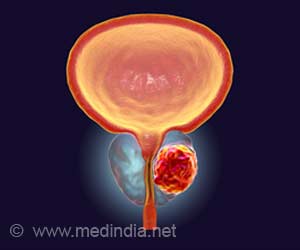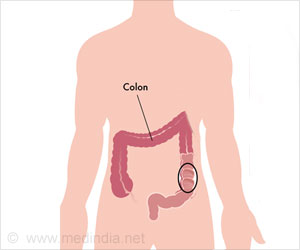A skin cream that can dramatically decrease the growth of the existing cancers has proved to be successful in mice.
A skin cream that can dramatically decrease the growth of the existing cancers has proved to be successful in mice.
The cream works by hyperactivating body's natural DNA repair mechanisms.
The discovery has researchers excited as it may have similar implications in humans as it could be added to sunscreen as a cancer-fighting agent.
CP-31398, which is the active component of the cream, works by reactivating disabled forms of a natural tumour-suppressing protein called p53, nicknamed ‘the guardian of the genome’.
The protein manages several important cellular functions, including the repair of damaged DNA, cell division and a genetically encoded auto-destruct pathway called apoptosis that kills unhealthy cells.
In over half of all human cancers, the p53 gene is mutated. Therefore, pharmaceutical companies have been looking for compounds that will be able to protect or restore p53 activity, in the hope that these might prevent or treat cancer.
It was shown by the researchers in 1999, that CP-31398 restores normal activity to mutated p53 proteins in cell cultures (however its exact working is not known)
A biochemist at the University of Alabama in Birmingham, Mohammad Athar went ahead to test the compound in live animals.
Onto the skin of hairless mice, Athar and his colleagues slathered the compound and then exposed the mice to ultraviolet (UV) light twice a week for 35 weeks.
When the experiment ended, mice treated with CP-31398 had seven tumours on average; control mice that did not receive the drug had 16. The tumours that developed on treated mice were almost a sixth the size of tumours in control mice.
The researchers also found that the compound slowed the growth of preexisting skin tumours.
“I think the results of this preclinical study look promising,” says Wafik El-Deiry, a cancer biologist at the University of Pennsylvania School of Medicine in Philadelphia.
He added: “If the compound survives subsequent testing it could be used as an additive to sunscreen.”
CP-31398 is not the first skin treatment that has been shown to repair cellular damage from sun exposure.
Precancerous skin lesions in mice can be kept at bay by lotion containing fragments of DNA. And a salve containing a DNA repair protein reduces the number of skin tumours in people with a genetic defect in this DNA repair system.
El-Deiry said that the next significant step will be to compare how the cancer-fighting properties of CP-31398 compare not only to these experimental alternatives but also to the UV-blocking properties already in sunscreens.
CP-31398 will have to be tested for safety and efficacy before it can be used in humans.
Athar said that he has not detected any negative side effects of the drug in mice; however, earlier work has suggested that too much p53 can cause premature ageing. CP-31398 restores mutant p53 proteins to their normal function, but it is still not clear whether the drug boosts p53 activity beyond that found in a typical cell.
He said that until now his lab has not found any evidence that CP-31398 enhances p53 activity beyond normal levels.
It is still not known whether CP-31398 will be active against other forms of cancer.
Athar noted that different cancer-causing agents generate different kinds of mutant p53. Whether CP-31398 can correct more than just damage due to UV light remains to be seen.
The results are published in the Journal of Clinical Investigation 2.
Source-ANILIN/P











